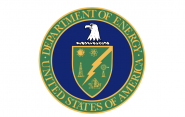DOE-Funded Water-Splitting Device for Hydrogen Production

With a $1.25 million award from the U.S. Department of Energy (DOE), Prof. Shu Hu will build a water-splitting device designed for the large-scale production of green hydrogen.
 The project is among 22 in the U.S. that will receive a total of $42 million in funding from the DOE. The projects aim to advance critical technologies for producing, storing, and deploying clean hydrogen. All of these projects will be managed by DOE’s Hydrogen and Fuel Cell Technologies Office and are in support of the DOE’s “Hydrogen Shot” goal of reducing the cost of clean hydrogen to one dollar per one kilogram in one decade (“1-1-1”).
The project is among 22 in the U.S. that will receive a total of $42 million in funding from the DOE. The projects aim to advance critical technologies for producing, storing, and deploying clean hydrogen. All of these projects will be managed by DOE’s Hydrogen and Fuel Cell Technologies Office and are in support of the DOE’s “Hydrogen Shot” goal of reducing the cost of clean hydrogen to one dollar per one kilogram in one decade (“1-1-1”).
Hu, assistant professor of chemical & environmental engineering, said the solar-driven device will split water into its two components, oxygen and hydrogen, and collect the hydrogen over a large area. Aiming for record efficiency and stability, the device will capture light and, with a photochemical energy conversion process, shine the light onto a semiconductor made from the mineral perovskite. Absorbing the light, the semiconductor then generates charges that are directed to the catalysts of the reactor, which produce hydrogen and oxygen. The oxygen is vented into the atmosphere and the hydrogen is collected and compressed to be delivered.
The device will be more than 200 square centimeters, or a little larger than a typical laptop computer. Hu said that it will be the largest light-capturing device that the community has ever attempted to build. A key part of the project is perfecting a manufacturing technique to make the device easily scalable.
“Essentially, it combines the most efficient semiconductor perovskite materials for light capture and the most efficient catalyst that operates in mild PH conditions for direct sunlight-driven water splitting,” said Hu, a member of the Yale Energy Sciences Institute. “With its stability, its scalable manufacturing and its efficiency combined together, this is an important milestone for achieving the DOE’s Hydrogen Shot goal.”
DOE officials said the grants advance the goal of reaching a 100% clean electrical grid by 2035 and net-zero carbon emissions by 2050. The production of green hydrogen is a significant part of this effort, as it’s critical to numerous sectors, including transportation, fuel production, and steel manufacturing.
“Today’s investments are a bold step in addressing some of our hardest to decarbonize sectors — heavy transportation and industry — by working directly with states and tribes to make hydrogen an available clean energy source,” said U.S. Secretary of Energy Jennifer M. Granholm.
Clean hydrogen — which is produced with zero or next-to-zero carbon emissions — can leverage all our nation’s clean energy resources, including renewables, nuclear, and fossil resources with carbon capture, DOE officials said. It can also support the expansion of clean electricity by providing a means for long-duration energy storage and offering flexibility and multiple revenue streams to all types of clean power generation — including renewables, today’s nuclear fleet, advanced nuclear, and other innovative technologies.
U.S. Congresswoman Rosa DeLauro said the grant for Hu’s project will help make the DOE’s Hydrogen Shot goals a reality.
“Improving hydrogen technology and the growing use of hydrogen — where Connecticut is leading the charge — will lead to the creation of well-paying engineering, manufacturing, sales, and service jobs,” she said, “building a new energy economy that will lead us to a brighter future both in our state and across the nation.”

